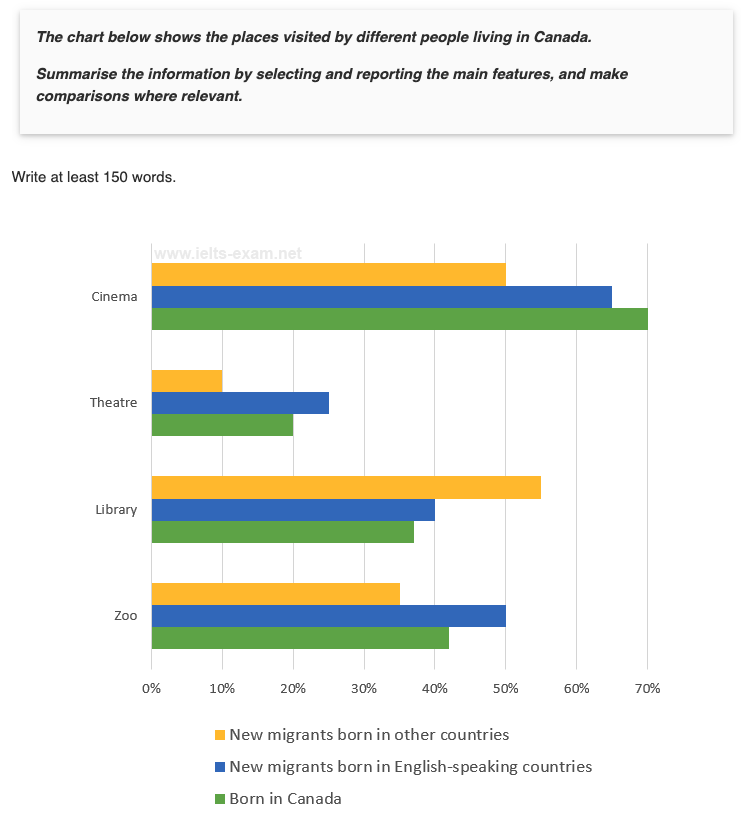
The chart gives information about the kinds of leisure activity engaged in by three distinct groups: native Canadians, recently arrived immigrants from English-speaking countries and new migrants for whom English is not the first language in their country.
The cinema is by far the most popular free-time activity listed in the chart for those with English as their first language — 70% of non-migrants and 65% of English-speaking migrants. Half the migrants from non-English-speaking countries also go to see a film but interestingly, 5% more of this group prefer the library to the cinema. Roughly 40% of the other two groups say they visit the library.
Zoos are visited most by half of the English-speaking migrants compared to just over 40% of those born in Canada and approximately 35% of the migrants born where English is not widely spoken. The theatre is least popular for all concerned, with only 10% of non-English-speaking migrants attending, while double the number of native Canadians go to see a play. A quarter of those born in English-speaking countries are theatre-goers.
Overall, it is perhaps unsurprising that Canadians prefer the cinema to the theatre, but the popularity of the library with new migrants may reflect the financial circumstances of these new citizens.
该图表提供了三个不同群体从事的休闲活动种类的信息:加拿大本地人、最近从英语国家来的移民和英语不是其国家第一语言的新移民。
迄今为止,电影院是图中列出的以英语为母语的人最受欢迎的自由活动--70%的非移民和65%的英语移民。半数来自非英语国家的移民也会去看电影,但有趣的是,比起电影院,这个群体中还有5%的人更喜欢去图书馆。另外两个群体中大约有40%的人说他们会去图书馆。
半数英语国家的移民去动物园的次数最多,而在加拿大出生的移民中,只有40%多一点,在英语不普及的国家出生的移民中,约有35%的人去动物园。剧院最不受有关方面的欢迎,只有10%的非英语移民去看戏,而加拿大本地人去看戏的人数是他们的两倍。在英语国家出生的人中,有四分之一的人是戏剧观众。
总的来说,加拿大人更喜欢看电影而不是看戏,这也许并不奇怪,但图书馆受到新移民的欢迎可能反映了这些新公民的经济状况。



